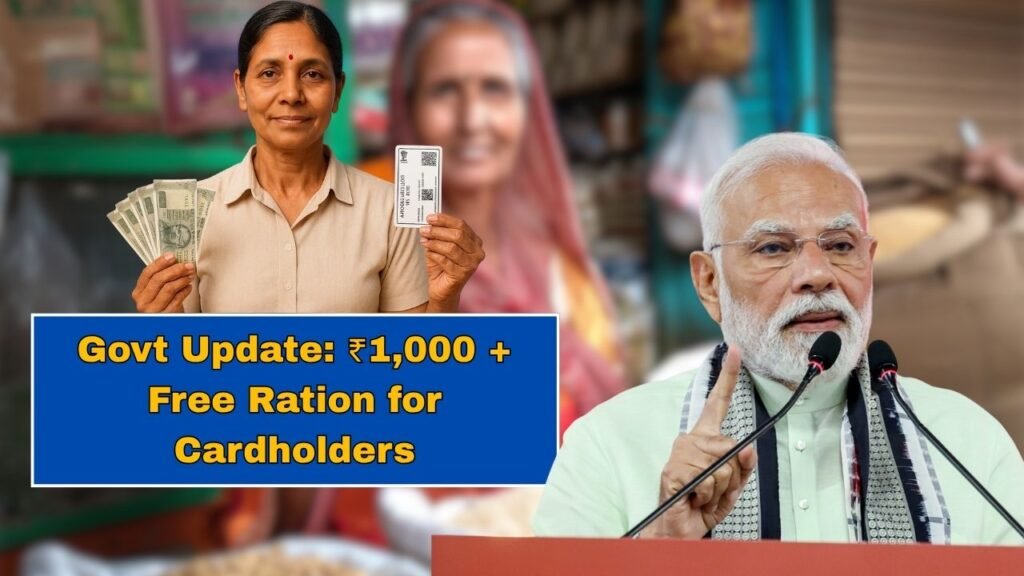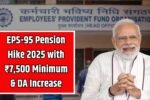Ration Card Holders: The Indian government has announced new ration card rules in 2025 that bring major changes for millions of families. The most important change is the ₹1000 monthly benefit for all eligible ration card holders. This scheme helps low and middle-income households by giving both food and financial support. It makes welfare distribution more transparent, easy, and fair for everyone.
What Are Ration Cards and Why They Matter
Ration cards are important documents for every household in India. They allow families to buy food items like rice, wheat, and sugar at low prices from government shops. Over the years, ration cards have helped ensure that every family, especially poor ones, gets enough food. Now, with the new update, cardholders also get direct cash support every month to meet their daily needs.
Understanding the New Ration Card Rules
The new ration card rules introduced in 2025 are meant to make the system faster and more efficient. Every eligible cardholder will now receive ₹1000 per month. This amount is sent directly to their bank account linked with the ration card. The goal is to avoid delays and reduce corruption.
The government is also using digital verification to make sure the process stays transparent. Paperwork has been reduced, and verification has become easier. This means people can get help more quickly without standing in long queues or filling many forms.
Eligibility for the ₹1000 Monthly Benefit
To receive the benefit, families must have a valid ration card. It can be any type — APL (Above Poverty Line), BPL (Below Poverty Line), or Priority Household. Every category is included in this plan.
Applicants should also make sure their bank account is linked to their ration card. This is important because the ₹1000 benefit is transferred directly to the linked account. Families who don’t yet have a ration card can apply for one at their local ration office or online.
How to Apply for the ₹1000 Benefit
The application process for the ₹1000 benefit is simple. Here’s how eligible families can apply:
- Make sure you have a valid ration card.
- Link your bank account to your ration card. You can do this at the nearest PDS (Public Distribution System) office or on the state’s official website.
- Check that all your details—name, address, and family members—are correct.
- Submit necessary documents like your Aadhaar card or identity proof.
- After verification, ₹1000 will be automatically sent to your bank account every month.
Benefits of the New Rules
The new ration card rules come with many advantages:
- Families get direct financial support for food, utilities, and education.
- The process is digital, transparent, and quick.
- All eligible cardholders are included to ensure no one is left behind.
- Paperwork and middlemen are reduced.
- Bank linkage encourages financial inclusion and proper record keeping.
These benefits help improve the living standards of poor and middle-class families and increase trust in government welfare programs.
Linking Bank Accounts for Direct Benefit
A big part of this scheme is the direct transfer of ₹1000 to bank accounts. It removes the need for cash distribution by officials. Beneficiaries should make sure their bank account is active and correctly linked to their ration card.
Banks and post offices across India are helping people verify their details. This effort also helps promote financial awareness, especially in rural areas where many people are new to banking.
Steps Taken for Transparency
The government has made strict rules to prevent fraud and misuse. Every application is checked digitally with the help of Aadhaar and state databases. Only verified and eligible people receive the ₹1000 benefit.
These new systems make sure that no fake ration card or duplicate application gets through. It ensures that money reaches the right person and builds public trust in the scheme.
How This Helps Families
The ₹1000 per month may seem small, but it makes a big difference for families struggling with expenses. The money can be used to buy extra food, pay electricity bills, or cover small emergencies. It also adds to the support families get from subsidized grains.
This combination of food and cash assistance gives families flexibility and a sense of security. It helps them plan better and worry less about basic needs.
Common Challenges
Even though the scheme is beneficial, beneficiaries must stay alert. They must check their details regularly and ensure that their bank and ration card information is correct. Small errors can delay payments.
Different states may have slightly different rules, so it’s important to follow the local process. Any issue should be reported to local authorities immediately to avoid interruptions.
Benefit Summary
| Benefit Type | Details |
| Financial Help | ₹1000 per month |
| Food Items | Rice, wheat, pulses, oil (Free) |
Conclusion
The 2025 ration card update is a big step toward supporting families across India. The ₹1000 monthly benefit, combined with free ration supplies, gives both financial help and food security. The use of digital systems, transparent transfers, and strict checks makes this initiative efficient and fair.
Disclaimer
This article provides general information based on the government’s 2025 ration card update. The details may vary by state, and applicants should check official state websites or local authorities for exact procedures. The writer is not responsible for any changes or errors in official rules or benefits.



